Learn
As you learned in the introduction, the Palace of Versailles began as a hunting lodge and evolved into a palace. Most homes in France are not palaces, however.
Housing in France, as in other countries, is dictated by such factors as geography, available materials, economic activities, weather, neighboring influences, etc.
In this segment of the lesson, we will look at a few of the traditional homes that are found in various regions of France. As you view these homes and learn about their construction, ask yourself, "What does this residence suggest about the people who built it?" Consider the aforementioned factors, as well as any others that might apply in your answer.
Note: The homes are listed by region to assist you as you reflect on this question.
Normandy
The chaumière is a farmhouse made of local materials like clay, stone, or wood. The defining feature of the style is the thatched roof, made from dried reeds or stalks of grain. Rooms are laid side by side - each having its own small window. The interiors generally feature wooden half-timbered beams, small connecting doors joining one room to the next, and whitewashed walls.
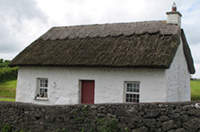
Alsace
The ground floor of the Tudor or half-timbered house is constructed from stone - a fire safety measure - while the remaining floors are made of half-timbered or latticed wood.
Houses are generally built side by side with most using corbels or arches to create a support so that the upper floors can be built wider than the lower ones. This style of architecture is German in origin but can be found all over France and England as well.
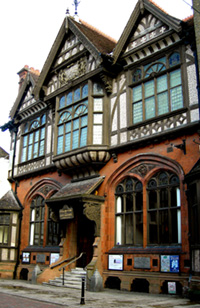
Storye book. "Royal Museum and Free Library in Canterbury, Kent, England." Photograph. Wikimedia Commons. 2010. Web 13 March 2015.
Brittany
The longère is a long, single-story, rectangular house that stretches out somewhat like a Native American longhouse. Constructed of stone, brick, or granite, the longère typically features a thatched or slate roof.
Possessing no courtyard, it has a number of large windows that look out onto the lawn.
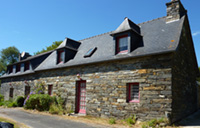
Moreau, Henri. "Sait-Rivoal: bourg, longère rénovée." Photograph. Wikimedia Commons. 2010. Web 13 March 2015.
Auvergne
The pisé or rammed-earth house is constructed by packing soil into hollow, wooden forms which are later removed. The clay walls are then pierced with a series of holes that allow the house to "breathe." Tile roofs - also made of clay - are traditional.
Today, few houses are made entirely of pisé since farmers, as they became more prosperous, added to or replaced these structures with stone.
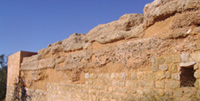
Limousin
The manor house or maison de maître is a stone or granite houses that was originally owned by the nobility.
Possessing a great hall, several bedrooms, multiple bathrooms, at least two kitchens, and - for the lucky few - a pigeonnier or dovecote, they were built to convey the status and wealth of the owner.
Outlying houses called dépendances were occupied by tenants who farmed the land, paying the local seigneur with a percentage of their yield.
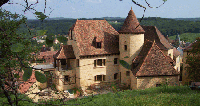
Rhône Alps
The chalet is built to withstand harsh, winter weather and to provide stunning views of the snow-covered mountains where they are typically built.
Constructed of local wood and/or stone, a chalet resembles nothing so much as an elegant barn with an incongruousout of place balcony.
Defining features include wooden-shuttered windows, open, high-ceiling interiors with lots of exposed beams and local wood, and an imposingly large fireplace.
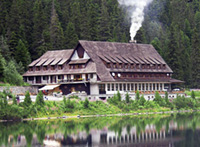
Verbes Irréguliers
In this lesson, you will learn how to talk about the chores that you do around the house.
Some of these new expressions use irregular verbs that you have not studied before. These verbs are conjugated in this lesson. As you complete written activities involving these verbs, you may wish to revisit this lesson to refresh your memory, or you may choose to save this link to your favorites.
| tondre la pelouse | je | tonds | nous | tondons |
| to mow the lawn | tu | tonds | vous | tondez |
| il / elle | tond | ils / elles | tondent | |
| Il tond la pelouse | on | tond | past participle - tondu |
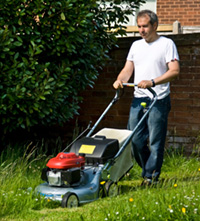
| faire le ménage | je | fais | nous | faisons |
| to do housework | tu | fais | vous | faites |
| il / elle | fait | ils / elles | font | |
| Nous faisons le ménage. | on | fait | past participle - fait |

| sortir la poubelle | je | sors | nous | sortons |
| to take out the trash | tu | sors | vous | sortez |
| il / elle | sort | ils / elles | sortent | |
| Tu sors la poubelle. | on | sort | past participle - sorti |
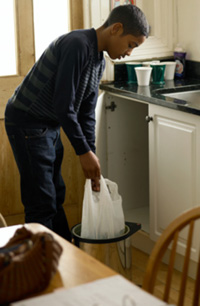
| balayer | je | balaie | nous | balayons |
| to sweep | tu | balaies | vous | balayez |
| il / elle | balaie | ils / elles | balaient | |
| Vous balayez la pièce. | on | balaie | past participle - balayé |

| nettoyer | je | nettoie | nous | nettoyons |
| to clean | tu | nettoies | vous | nettoyez |
| il / elle | nettoie | ils / elles | nettoient | |
| Elle nettoie la maison. | on | nettoie | past participle - nettoyé |

| mettre la table | je | mets | nous | mettons |
| to set the table | tu | mets | vous | mettez |
| il / elle | met | ils / elles | mettent | |
| Ils mettent la table | on | met | past participle - mix |
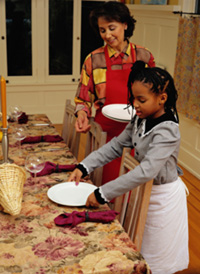
| éteindre | je | éteins | nous | éteignons |
| to turn off | tu | éteins | vous | éteignez |
| il / elle | éteint | ils / elles | éteignent | |
| J'éteins la lumière. | on | éteint | past participle - éteint |
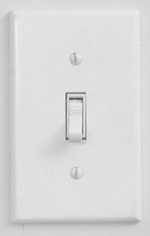
| essuyer | je | essuie | nous | essuyons |
| to dust; to wipe | tu | essuies | vous | essuyez |
| il / elle | essuie | ils / elles | essuient | |
| Elles essuient les meubles. | on | essuie | past participle - essuyé |

Bike Share
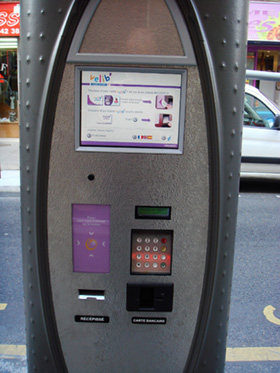 In an effort to combat traffic congestion, reduce carbon emissions, improve public health, and provide a viable 'gap' mode of transportation to busy urbanites, countries like France, Spain, Italy , and China have made major investments in public bike-sharing systems.
In an effort to combat traffic congestion, reduce carbon emissions, improve public health, and provide a viable 'gap' mode of transportation to busy urbanites, countries like France, Spain, Italy , and China have made major investments in public bike-sharing systems.
For a small fee, city-dwelling individuals can borrow a bike from one location, go shopping, get to an appointment, or run an errand, then return the bike to another location.
Begun in Europe in 1965, bike-sharing has taken off in recent years and has now spread to five continents. In 2013, New York successfully launched its Citi Bike program, and plans are underway to double the size of the fleet by 2017.
In Paris, Vélib (vélo libre) stations can be found throughout the city using a smartphone app. Other bike-sharing programs can be found in smaller urban areas across the country. Learn more about the VTC (vélo tous chemin) and VTT (vélo tous terrain) systems.
Evan. "Paris Vélib Service." Photograph. Wikimedia Commons. 2007. Web 17 March 2015.
 |
 |